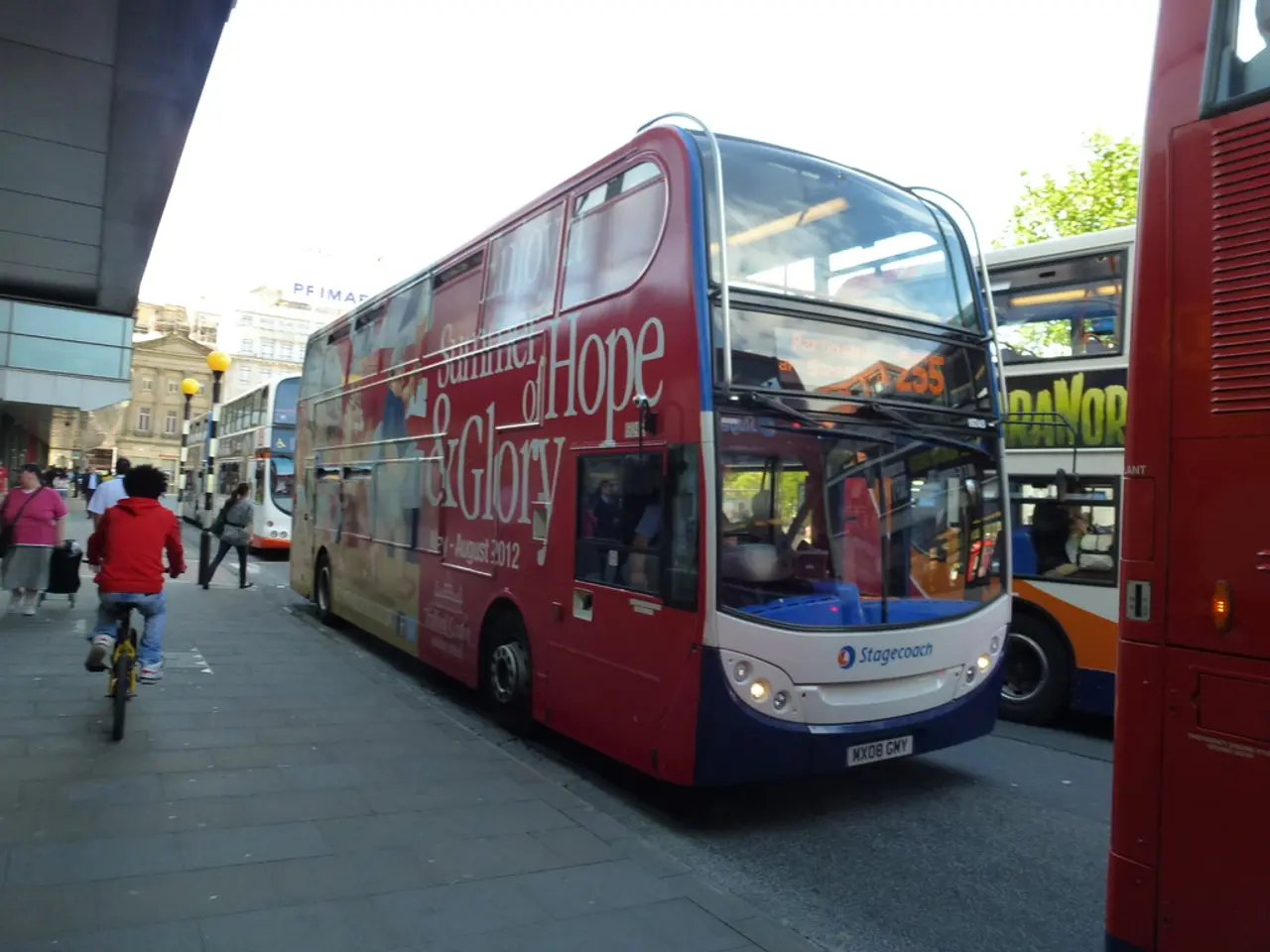Where is public transport in Rhineland-Palatinate headed? - Rhineland-Palatinate’s Bold €3.9B Public Transport Overhaul Nears Final Approval
A comprehensive overhaul of Rhineland-Palatinate's public transport system is on the horizon. The Ministry of Mobility in Mainz is gearing up to finalize the Local Transport Plan by the end of 2023, aiming to establish uniform standards across the region. This ambitious project, long delayed, is now in its final stages and promises significant improvements by 2040.
The Association of German Transport Companies (VDV) Southwest has presented a cost-benefit analysis for enhancing local public transport in the region. Two scenarios, 'Modernization 2040' and 'Germany-Wide Service 2040', outline different levels of investment and service improvements. The 'Modernization 2040' scenario would increase annual funding needs from €1.3 billion to €2.3 billion by 2040, while the 'Germany-Wide Service 2040' scenario would cost €3.93 billion per year by the same time.
Taking into account Rhineland-Palatinate's unique conditions, such as its large area with numerous small towns and low fare revenues, the plan includes modernizing railway stations, expanding regional bus lines, developing regional light rail networks, and enhancing sustainable infrastructure like the procurement of climate-friendly steel for rail tracks. These improvements aim to boost connectivity and environmental sustainability by 2040. Specific investment amounts and project details focus on rail infrastructure upgrades and integration with sustainable technologies.
To support this extensive modernization, a skilled labor recruitment campaign for the public transport sector will be launched on November 20. The Ministry of Mobility acknowledges significant funding gaps due to sharp price increases and limited federal regionalization funds. With the Local Transport Plan expected to be finalized soon, Rhineland-Palatinate's public transport future looks set to be transformed, with uniform standards covering stops, accessibility, vehicles, infrastructure, and social standards for employees.








